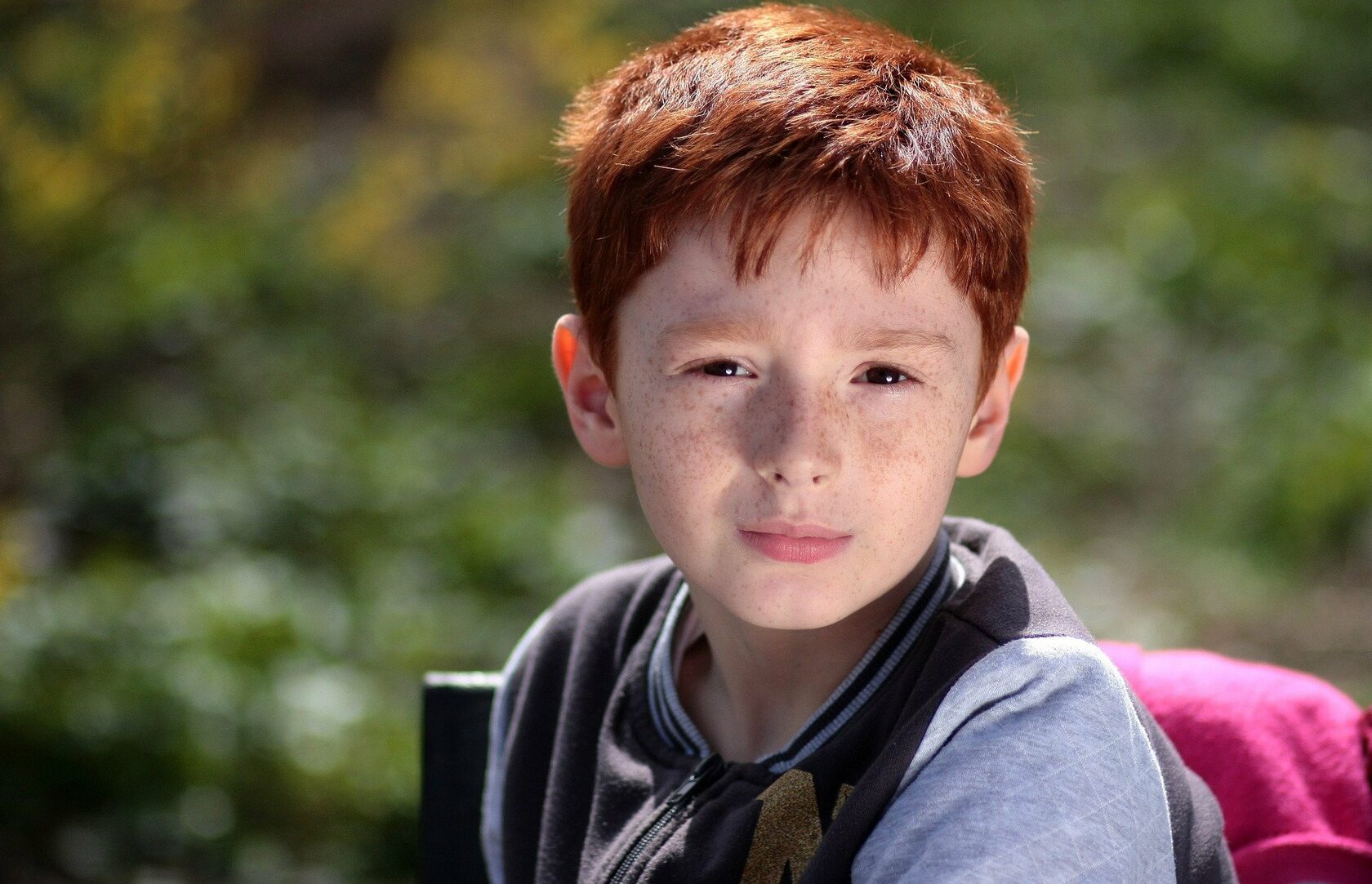Autism is a common neurodevelopmental disease that characterized by core deficits in 2 domains: social communication/interaction and restrictive, repetitive patterns of behavior. By the Diagnostic and Statistical Manual of Mental Disorders-V (DSM-V), autism is included in autism spectrum disorder (ASD) as well as Asperger’s disorder, childhood disintegrative disorder, and pervasive developmental disorder not otherwise specified.
Reasons for autism are still unknown, but research supports genetic and environmental factors.
Genetics plays a prominent role in ASD. Several research have analyzed twins and revealed that if one of the monozygotic twins has an ASD, the second one will also suffer from this disease with a probability of 80-90%. At the same time in dizygotic twins the probability of having autism in the second twin is only 0-10%.
Sibling studies indicate that ASD occurs in 7–20% of subsequent children after an older child is diagnosed with ASD, and this prevalence is increased in children with two older siblings with ASD.
Even though 74–93% of ASD risk is heritable, although non-genetic factors are also important.
Many risk factors for ASD have been associated with a mildly increased risk of ASD and developmental delay combined:
• advanced maternal age (≥40 years) and paternal age (≥50 years),
• short interpregnancy intervals (<12 months),
• maternal metabolic conditions, weight gain, bacterial or viral infections,
• familial history of autoimmune disease,
• prenatal valproic acid exposure,
• preterm birth (95th birthweight percentile),
• low birthweight (95th birthweight percentile),
• small-for-gestational-age status and large-for-gestational age status (>95th birthweight percentile).
No consistent associations between caesarean delivery or assisted conception and risk of autism have been found.
There are not any associations between autism and vaccinations! Children with autism should be vaccinated according to the recommended schedule.
In 2018 reported prevalence in the USA was 1 in 59 children (≈ 1.7%, or more than 5 million Americans), and in 2021, the Centers for Disease Control and Prevention (CDC) reported that approximately 1 in 44 (!) children in the U.S. is diagnosed with an ASD. Prevalence rates in US populations are like those of other industrialized countries.
ASD prevalence worldwide has been estimated as ranging from 0.08 to 9.3%9, and prevalence in the US has been estimated between 1.3 and 2.6%.
In detail, ASD is 4 times as likely to occur in male than female individuals:
• 1 in 27 boys identified with autism
• 1 in 116 girls identified with autism
There are a lot of information that prevalence of children with ASD has increased over time. This increase may be attributable to several factors:
• changes in the diagnostic criteria with ongoing revisions of the Diagnostic and Statistical Manual of Mental Disorders (DSM)-IV,
• increased public awareness of the disorder and its symptoms,
• recommendations for universal screening for ASD,
• increased availability of early intervention and school-based services for children with ASD.
Lower rates are reported in resource-limited countries, where epidemiological data are more difficult to collect.
Data on national samples suggest that the prevalence of ASD is stabilizing.
The prevalence of autism in mental health inpatient settings is estimated to be far higher than in the general population, ranging from 4% to 9.9%
The symptoms of autism are present from early childhood and affect daily functioning.
• 25% of children with autism are reported to have a regression in language or social skills, most typically between 18 and 24 months of age;
• 30% of children with autism also have intellectual disability;
• 30% are minimally verbal.
Standardized screening for ASD at 18 and 24 months of age with ongoing developmental surveillance continues to be recommended in primary care. Autism can be diagnosed as young as 18 -24 months of age and has evidenced-based interventions that may improve function, that’s why it’s important to reveal it as early as possible.
Early symptoms of autism:
• By 12 months: doesn’t respond to name
• By 14 months: doesn’t point at objects to show interest
• By 18 months: doesn’t pretend play
General:
• Avoids eye contact and may want to be alone
• Has trouble understanding other people’s feelings or talking about their own feelings
• Has delayed speech and language skills
• Repeats words or phrases over and over (echolalia)
• Gives unrelated answers to questions
• Gets upset by minor changes
• Has obsessive interests
• Makes repetitive movements like flapping hands, rocking, or spinning in circles
• Has unusual reactions to the way things sound, smell, taste, look or feel
The average age of diagnosis is 5 years.
The diagnosis of autism is based on identifying and reporting behaviorally defined clinical symptoms – by the Diagnostic and Statistical Manual of Mental Disorders (DSM)-V. To fulfill diagnostic criteria for autism, all 3 symptoms of social affective difference need to be present in addition to 2 of 4 symptoms related to restrictive and repetitive behaviors.
Persistent deficits in social communication and social interaction across multiple contexts, as manifested by the following, currently or by history; must have all 3 symptoms in this domain:
• Social-emotional reciprocity (Abnormal social approach and failure of normal backand-forth conversation; reduced sharing of interests, emotions, or affect; failure to initiate or respond to social interactions)
• Nonverbal communicative behaviors used for social interaction (Poorly integrated verbal and nonverbal communication; abnormalities in eye contact and body language or deficits in understanding and use of gestures; total lack of facial expressions and nonverbal communication)
• Developing, maintaining, and understanding relationships (Difficulties adjusting behavior to suit various social contexts; difficulties in sharing imaginative play or in making friends; absence of interest in peers)
Restricted, repetitive patterns of behavior, interests, or activities, as manifested by at least 2 of the following, currently or by history; must have 2 of the 4 symptoms:
• Stereotyped or repetitive motor movements, use of objects, or speech (Simple motor stereotypies, lining up toys or flipping objects, echolalia, idiosyncratic phrases)
• Insistence on sameness, inflexible adherence to routines, or ritualized patterns or verbal nonverbal behavior (extreme distress at small changes, difficulties with transitions, rigid thinking patterns, greeting rituals, need to take same route or eat food every day)
• Highly restricted, fixated interests that are abnormal in intensity or focus (Strong attachment to or preoccupation with unusual objects, excessively circumscribed or perseverative interest)
• Hyper- or hyporeactivity to sensory input or unusual interests in sensory aspects of the environment (Apparent indifference to pain/temperature, adverse response to specific sounds or textures, excessive smelling or touching of objects, visual fascination with lights or movement)
Parent-completed questionnaires are the most common screening tests used in primary care.
Children with milder symptoms and/or average or above-average intelligence may not be identified with symptoms until school age, when differences in social language or personal rigidities affect function.
You can hear about three “levels” of autism, with level 1 being the mildest and level 3 the most severe. High functioning autism describes “mild” autism (“level 1” on the spectrum) – such as Asperger’s syndrome. Symptoms are present, but the need for support is minimal.
Severe autism is sometimes called “level 3” on the spectrum. People with severe autism require help with day-to-day functioning. High level of support may be needed across the lifespan.
Terms like “mild” or “high functioning” aren’t official diagnoses.

Co-occurring medical and behavioral conditions such as disorders of sleep and feeding, gastrointestinal tract symptoms, obesity, seizures, attention-deficit/hyperactivity disorder, anxiety, and wandering affect the child’s function and quality of life.
The most common diseases
• in children with autism under 6 years of age:
– anxiety (50%)
– ADHD (40%)
– specific phobias (40%)
– oppositional/conduct disorder (20%)
• in childhood and adolescence (≈ age 12):
– anxiety (30%)
– ADHD (30%)
– oppositional/conduct disorder (15%)
• in adulthood:
– anxiety / social phobia (30%)
– depression (20%)
– oppositional/conduct disorder (20%)
Unfortunately, no current medication corrects core social and communication symptoms of autism. Children and youth with autism have service needs in behavioral, educational, health, leisure, family support, and other areas.
Medication is used to help manage coexisting behavioral health disorders (eg, ADHD, mood disorders, or anxiety disorders) and associated problem behaviors or symptoms causing significant impairment and distress (aggression, self-injurious behavior, sleep disturbance, mood lability, anxiety, hyperactivity, impulsivity, inattention).
!! One or more psychotropic medications are prescribed:
– for 1% of children with autism younger than 3 years,
– for 10% – 11% of children aged 3 to 5 years,
– 38% – 46% of children aged 6 to 11 years,
– 64% – 67% of adolescents aged 12 to 17 years.
The goals of treatment of children with autism are:
• to minimize core deficits (social communication and interaction and restricted or repetitive behaviors and interests) and co-occurring associated impairments;
• maximize functional independence by facilitating learning and acquisition of adaptive skills;
• eliminate, minimize, or prevent problem behaviors that may interfere with functional skills.
Treatments should be
• individualized,
• developmentally appropriate,
• intensive,
• with performance data relevant to treatment goals to evaluate and adjust intervention.
Interventions for children with ASD are provided through educational practices, developmental therapies, and behavioral interventions. There are a lot of treatment strategies and they may vary by the age and strengths and weaknesses of the child.
Many young adults with autism do not receive any healthcare for years after they stop seeing a pediatrician.
The prognosis and trajectory of development for a young child diagnosed with autism typically cannot be predicted at the time of diagnosis. Almost 80% of children who are diagnosed with ASD after a comprehensive evaluation at less than 3 years have retained their diagnosis.
Mild symptoms of autism can be more difficult to recognize in children younger than 3 years of age, especially if they have average or above-average cognitive abilities. Across early childhood development, communication skills and social affective symptoms may improve, whereas repetitive behaviors may change, possibly reflecting maturation and/or intervention.
By Leigh and al., direct and indirect costs of caring for children and adults with ASD in the United States in 2015 were estimated to be $268 billion, more than the cost of stroke and hypertension combined and would rise to $461 billion by 2025 in the absence of more-effective interventions and support across the life span.
On average, medical expenditures for children and adolescents with ASD were 4.1 to 6.2 times greater than for those without autism.
• More than half of young adults with autism remain unemployed and unenrolled in higher education in the two years after high school. This is a lower rate than that of young adults in other disability categories, including learning disabilities, intellectual disability or speech-language impairment.
• Of the nearly 18,000 people with autism who used state-funded vocational rehabilitation programs in 2014, only 60 percent left the program with a job. Of these, 80 percent worked part-time at a median weekly rate of $160, putting them well below the poverty level.
• Nearly half of 25-year-olds with autism have never held a paying job.
Research demonstrates that job activities that encourage independence reduce autism symptoms and increase daily living skills (resource: US Centers for disease control and prevention).
You can get more information on autism websites:
• Autism Science Foundation: https://autismsciencefoundation.org
• Simons Foundation: https://www.sfari.org
• Autistica: https://www.autistica.org.uk
• US NIH: https://www.nimh.nih.gov/health/topics/autism-spec… index.shtml
• Autism Speaks: www.autismspeaks.org
• Research Autism: http://www.researchautism.net/
• Autism Canada: https://autismcanada.org
• Autism Europe: https://www.autismeurope.org/
• Autism Spain: http://www.autismo.org.es
• Autismus Deutschland: https://www.autismus.de
• WHO: https://www.who.int/news-room/fact-sheets/detail/a…
Resources:
1) Kodak T., Bergmann S. (2020). Autism Spectrum Disorder. Pediatric Clinics of North America. doi:10.1016/j.pcl.2020.02.007
2) Lord C., Brugha T. S., Charman T., Cusack J., Dumas G., Frazier T., Veenstra-VanderWeele J. (2020). Autism spectrum disorder. Nature Reviews Disease Primers, 6(1). doi:10.1038/s41572-019-0138-4
3) Hyman S. L., Levy S. E., Myers S. M. (2019). Identification, Evaluation, and Management of Children With Autism Spectrum Disorder. Pediatrics, 145(1), e20193447. doi:10.1542/peds.2019-3447
4) Leigh JP, Du J. (2015) Brief report: forecasting the economic burden of autism in 2015 and 2025 in the United States. J Autism Dev Disord., 45(12): 4135–4139
photo from internet






